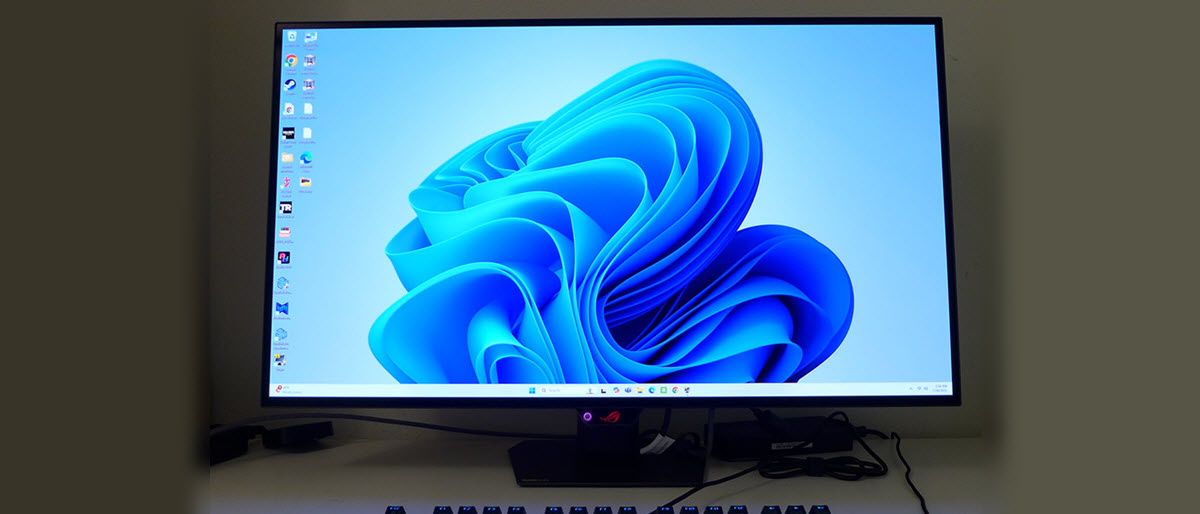Why you can trust Tom's Hardware
The XG32UCWMG delivers solid accuracy in its Racing picture mode with no need for calibration. You can tweak using color temp and gamma presets plus six-axis color saturation controls. Also available is an accurate sRGB mode.
Grayscale and Gamma Tracking
Our grayscale and gamma tests use Calman calibration software from Portrait Displays. We describe our grayscale and gamma tests in detail here.
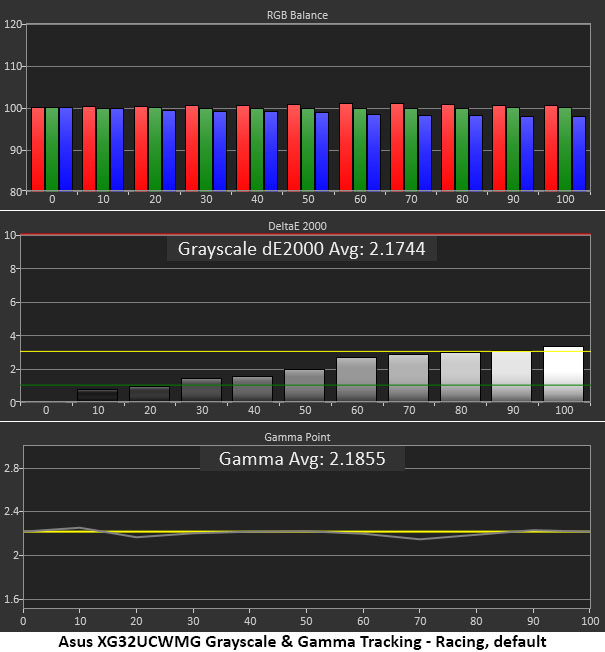
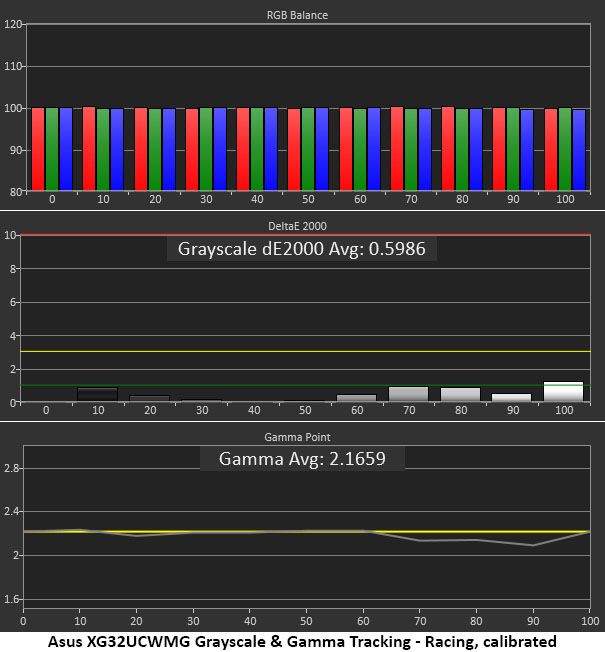
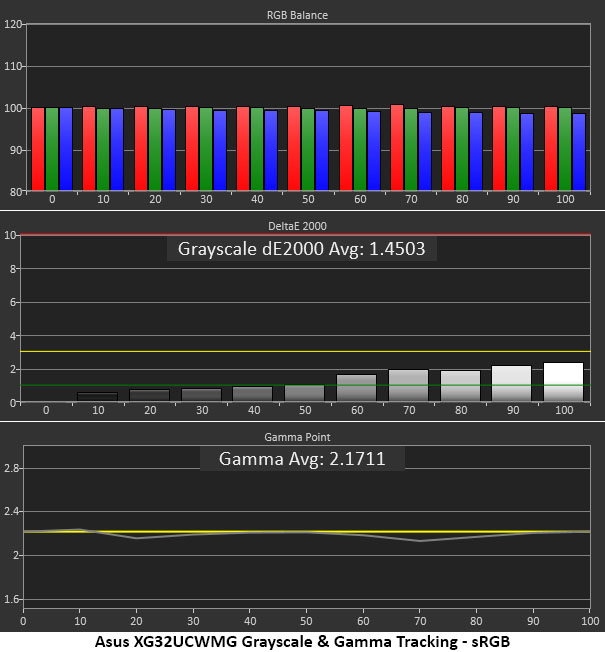
The XG32UCWMG’s grayscale errors are mostly invisible with all values save the 100% step below 3dE. You won’t see this in actual content. Gamma tracks very close to the 2.2 reference with just slight deviations at 10, 20 and 70%. Again, these are invisible errors.
Calibration brings grayscale tracking even closer to perfection, but a slight gamma anomaly is introduced. It’s a dip from 70-90% brightness that manifests as slightly elevated highlight areas. This is barely visible and since color is improved, it’s a worthwhile tradeoff.
If you want sRGB, the best option is to choose it from the Color Space options rather than using the sRGB picture mode from GameVisual. Both are accurate, but the former retains calibration controls. They aren’t needed, though; the above chart represents sRGB with no additional adjustments.
Comparisons
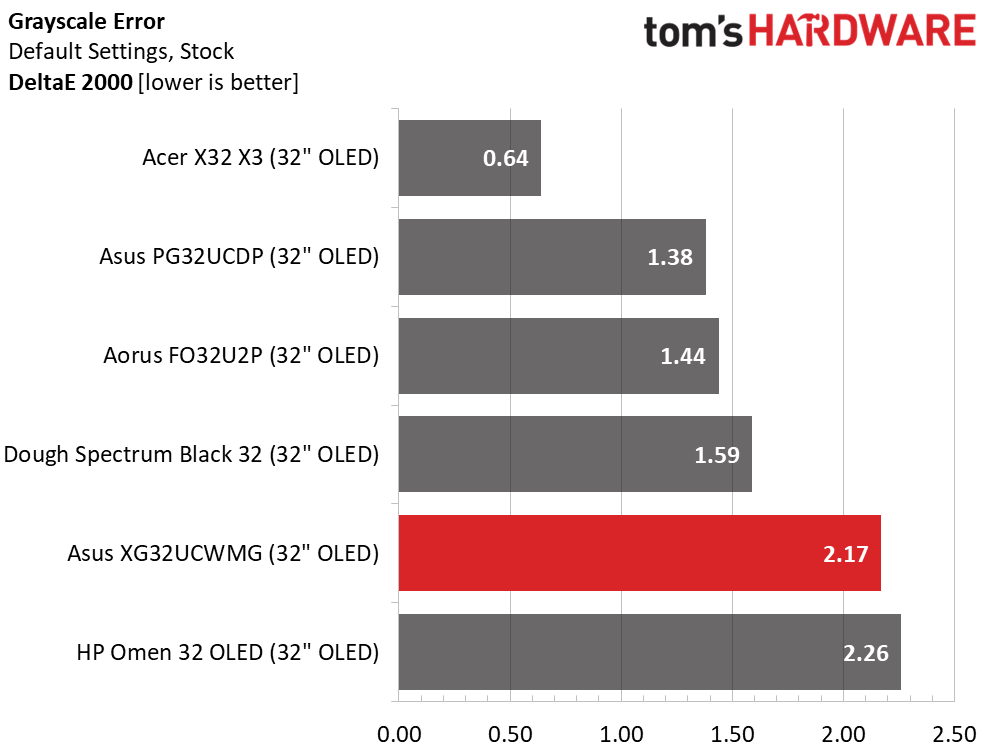
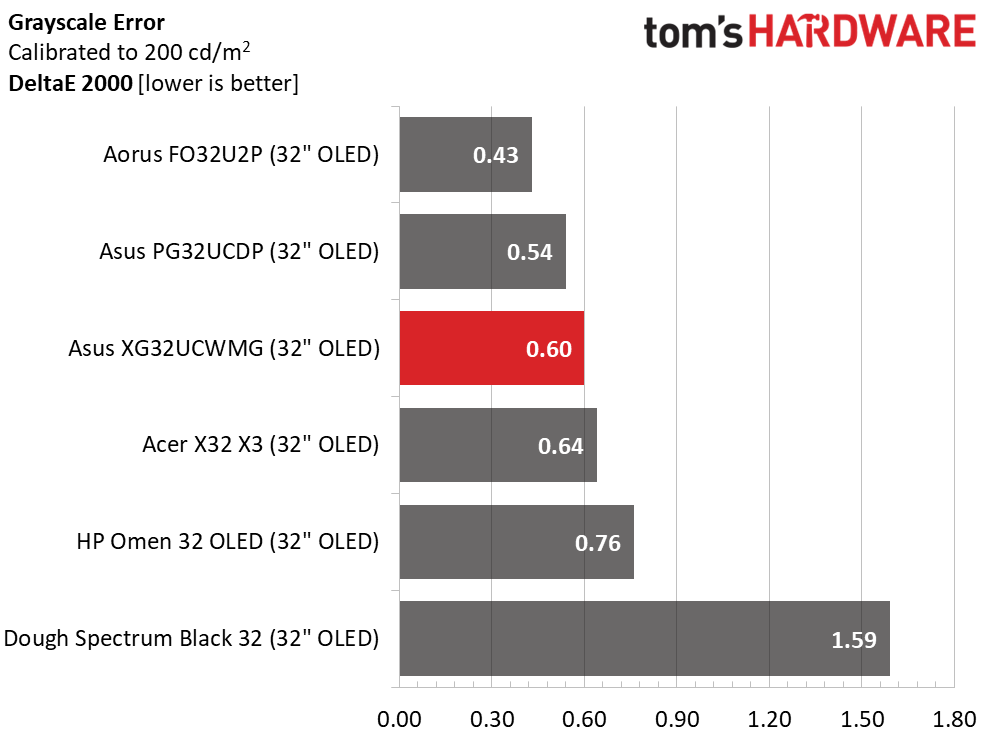
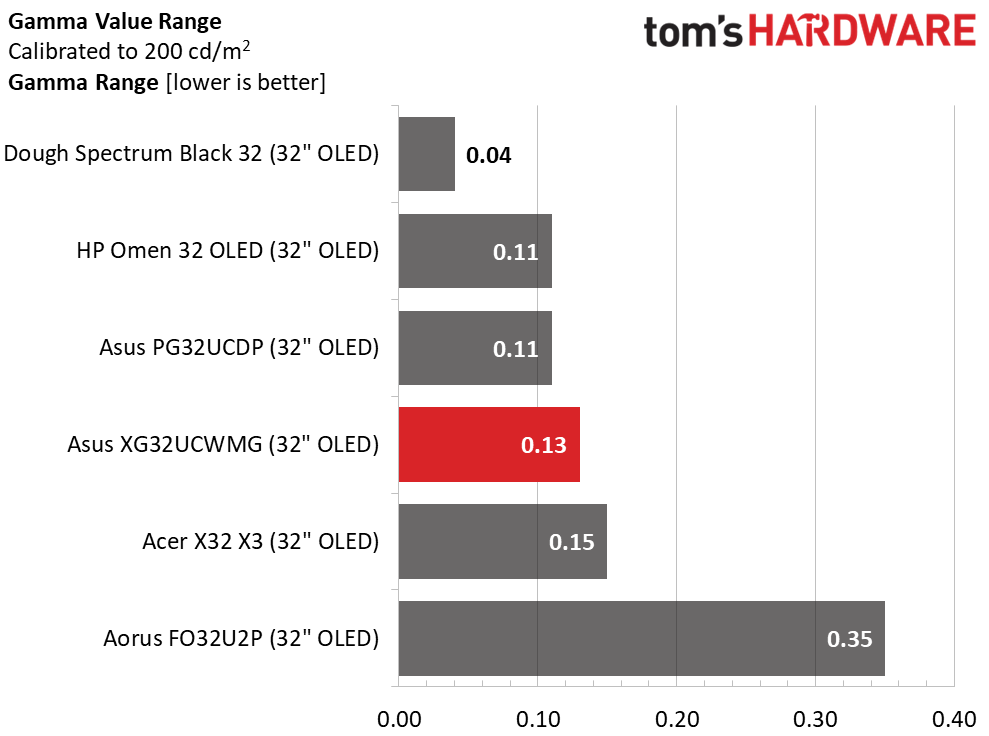
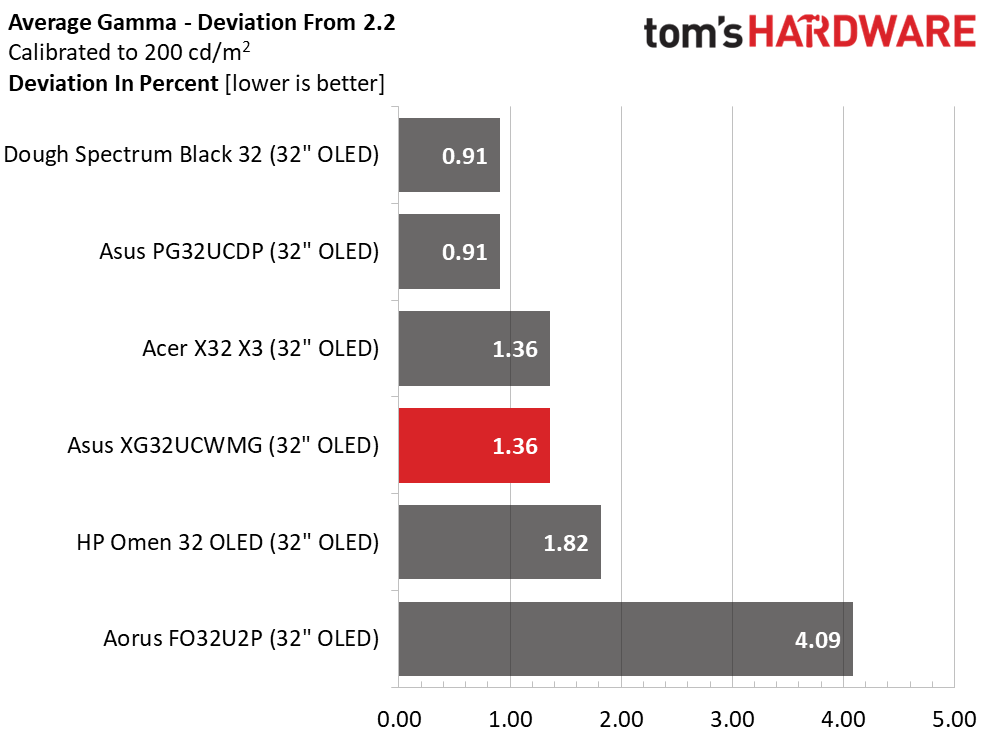
The XG32UCWMG continues the tradition of color-accurate OLEDs with an excellent score of 2.17dE in the default grayscale test. Though it finishes fifth here, none of the six monitors needs calibration, so visually, they are equal. After a one-click change to the red slider, the score improves to 0.60dE, good enough for third place.
Gamma is close to perfect with a 0.13 range of values and a 1.36% deviation from 2.2. The actual value is 2.17. But a couple of the others are closer to perfect. This is not a difference you’ll be able to see in practice. I have no complaints here.
Get Tom's Hardware's best news and in-depth reviews, straight to your inbox.
Color Gamut Accuracy
Our color gamut and volume testing use Portrait Displays’ Calman software. For details on our color gamut testing and volume calculations, click here.
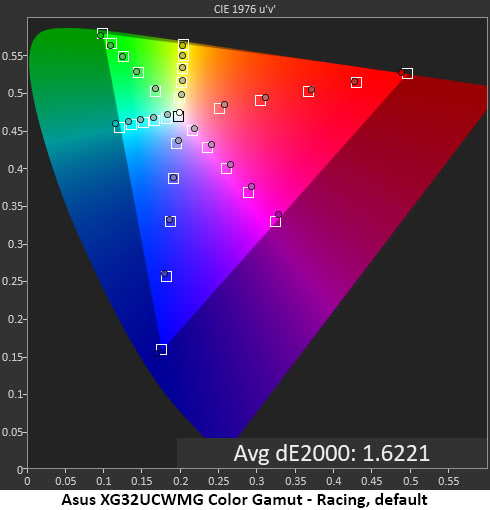
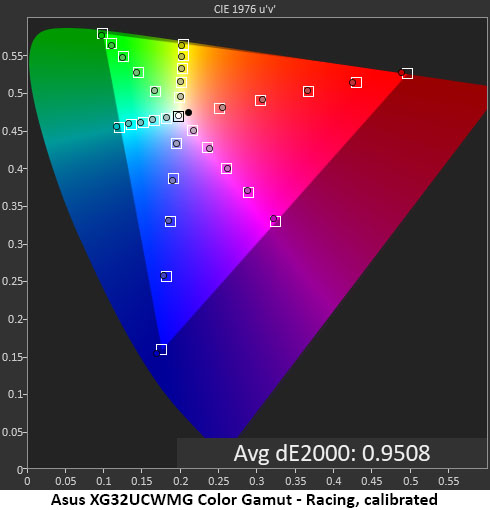
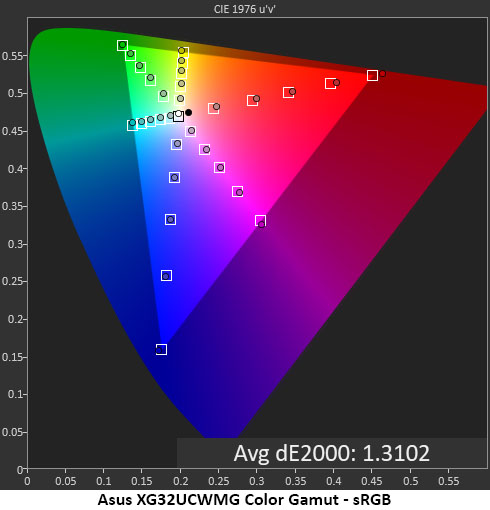
The XG32UCWMG hits its marks in the color gamut test with equal precision. You can see a tiny bit of oversaturation in red and a hue error in magenta, but these are invisible issues. A 1.62dE score means all aberrations are invisible to the naked eye. After calibration, the XG32UCWMG drops below 1dE with a 0.95dE score. That puts it among the most color-accurate monitors I’ve tested across all categories.
The sRGB option in the Color Space menu yields excellent results too, with an average error of just 1.31dE. It doesn’t get much better than that. Though you can calibrate this mode if you wish, it clearly isn’t necessary.
Comparisons
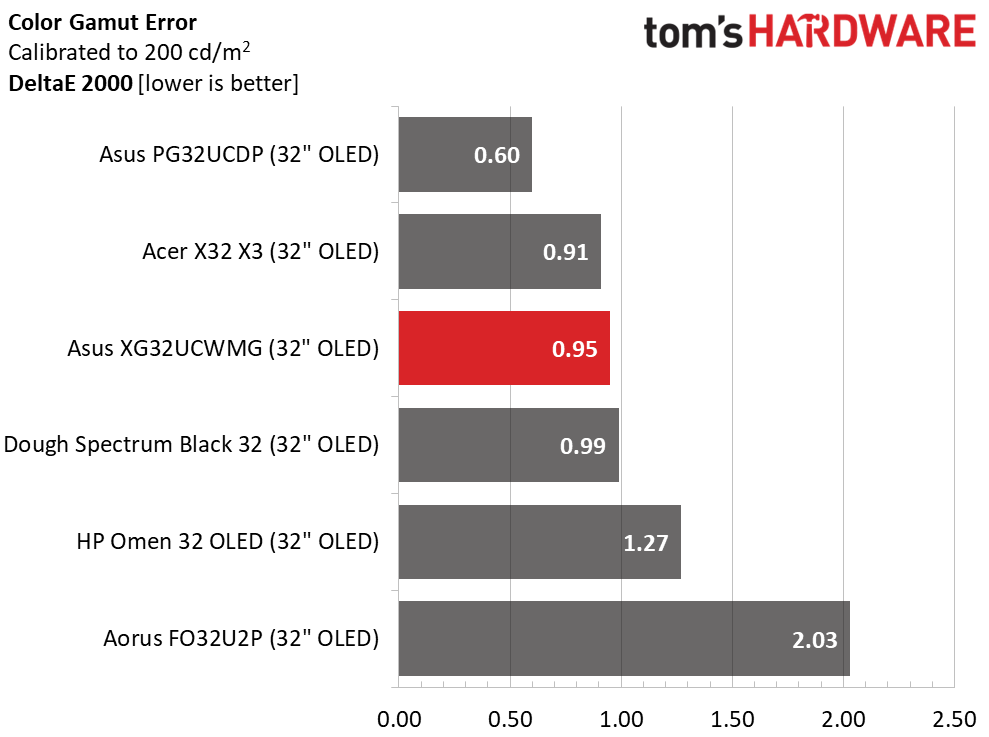
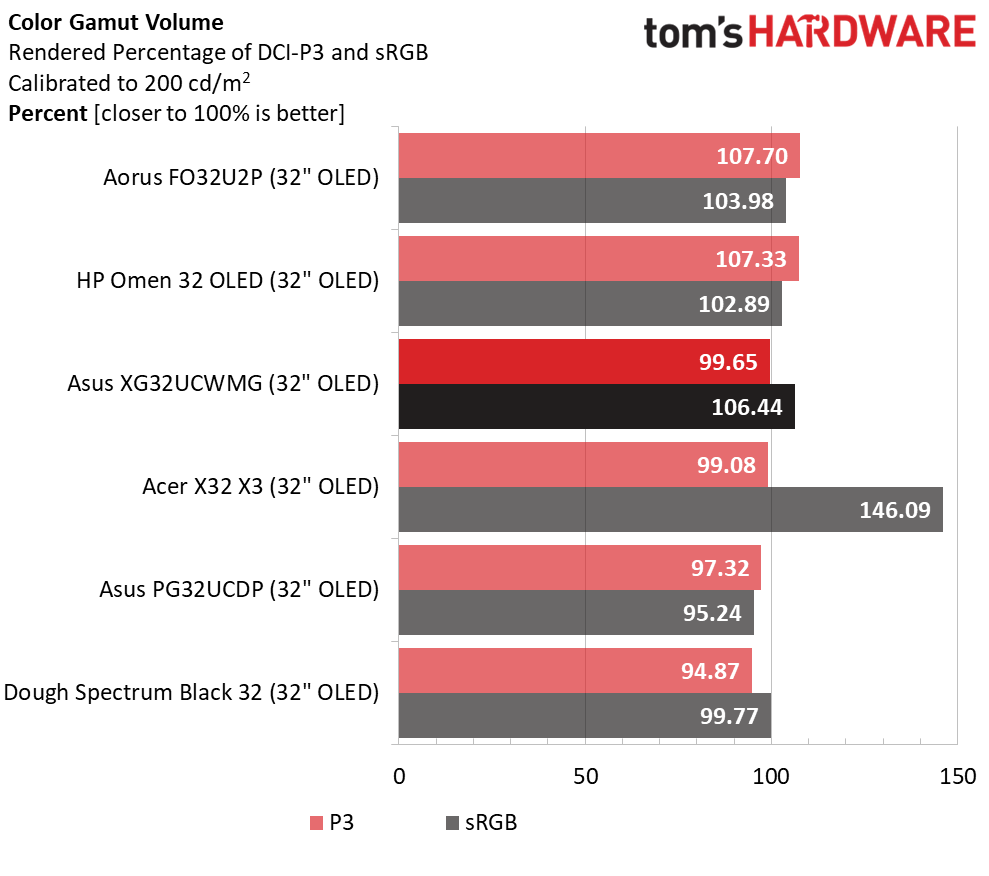
The XG32UCWMG cracks the 1dE barrier in my color gamut test but it isn’t the only one here capable of that feat. The top four screens all render professional-level accuracy, which is impressive for any category of display. That the worst of them is at just 2.03dE speaks well of the OLED genre.
The XG32UCWMG manages just a hair less than 100% coverage of DCI-P3, putting it in third place behind the top two Quantum Dot screens from HP and Acer. 7% can be seen, but the difference is small. The XG32UCWMG is plenty colorful, and for those seeking precision, 100% coverage is ideal.
Test Takeaway: The XG32UCWMG delivers superb color, grayscale and gamma accuracy. Calibration is not required, but it is available should you wish it. Also available is an equally accurate sRGB mode, which will be useful to photographers and graphics pros. The only missing element is Quantum Dot color, but the XG32UCWMG manages to cover almost 100% of DCI-P3, which is no small feat.
MORE: Best Gaming Monitors
MORE: How We Test PC Monitors
MORE: How to Buy a PC Monitor
Current page: Grayscale, Gamma and Color
Prev Page Brightness and Contrast Next Page HDR Performance
Christian Eberle is a Contributing Editor for Tom's Hardware US. He's a veteran reviewer of A/V equipment, specializing in monitors. Christian began his obsession with tech when he built his first PC in 1991, a 286 running DOS 3.0 at a blazing 12MHz. In 2006, he undertook training from the Imaging Science Foundation in video calibration and testing and thus started a passion for precise imaging that persists to this day. He is also a professional musician with a degree from the New England Conservatory as a classical bassoonist which he used to good effect as a performer with the West Point Army Band from 1987 to 2013. He enjoys watching movies and listening to high-end audio in his custom-built home theater and can be seen riding trails near his home on a race-ready ICE VTX recumbent trike. Christian enjoys the endless summer in Florida where he lives with his wife and Chihuahua and plays with orchestras around the state.
-
-Fran- Now we just need to slap these into VR HMDs :DReply
Joking aside, I wonder how the ruling about OLED tech with Samsung will affect OLED's general pricing. A bit of a left-field comment, but I think it matters in the context of the review itself? I think?
Anyway, nice review! Thanks a lot.
Regards.
